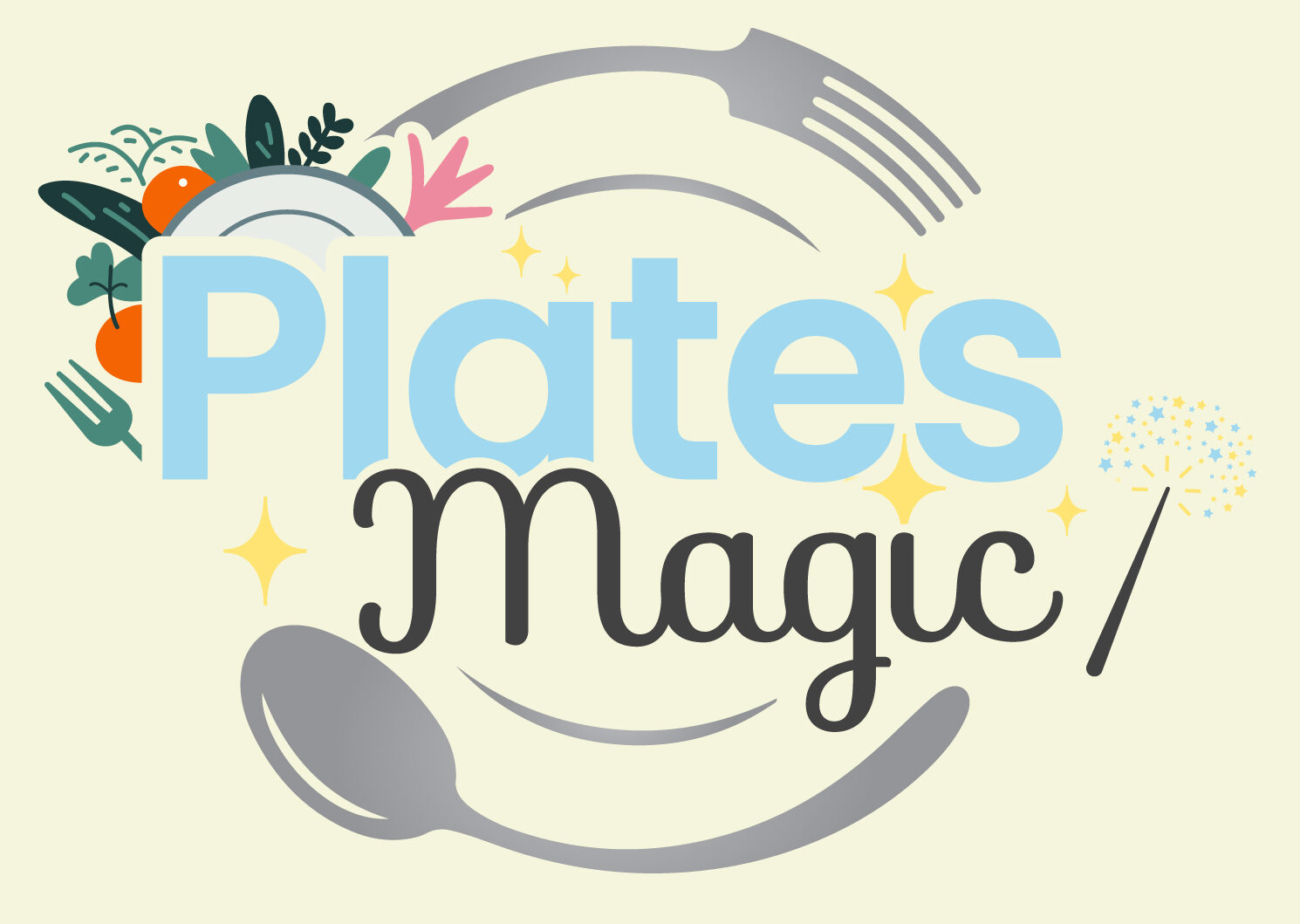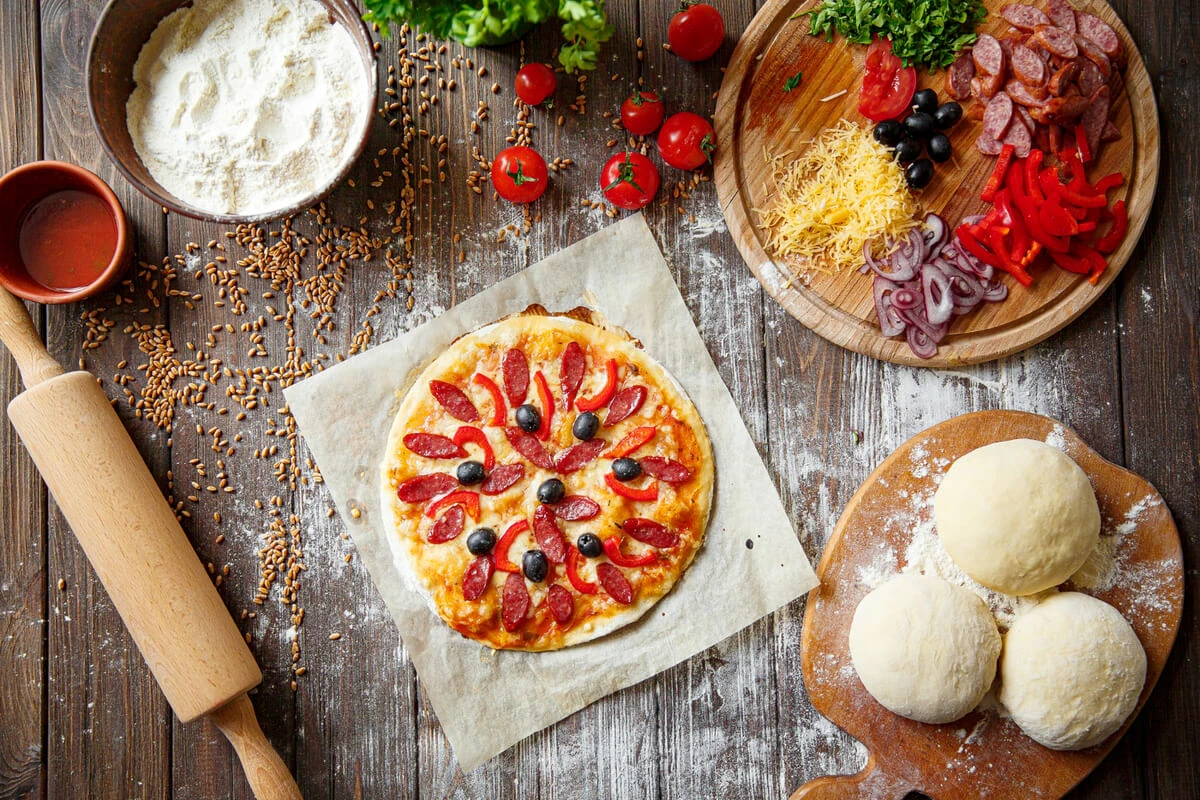Introduction
Pizza is one of the most versatile and beloved foods worldwide, and its foundation—the bread—plays a crucial role in defining its flavor and texture. Whether you’re making a classic margherita or experimenting with unique toppings, choosing the right bread can elevate your pizza game. So, which bread is best for pizza? From traditional pizza dough to French bread and Italian loaves, each type offers its own distinct advantages and culinary possibilities.
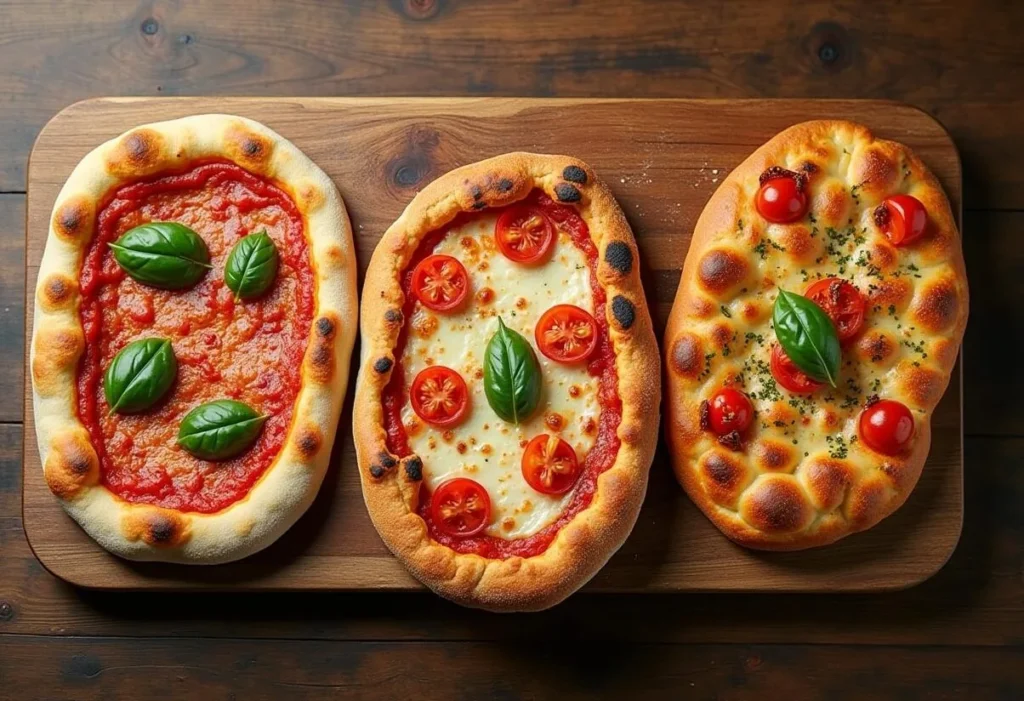
Traditional pizza dough remains a classic choice, offering elasticity and a chewy texture perfect for various toppings. French bread, on the other hand, is a quick and convenient option for those who want a crispy base without the hassle of kneading dough. Meanwhile, Italian bread like focaccia or ciabatta brings rich flavor and a softer texture to pizza creations.
In this guide, we’ll delve into these options, explore their strengths, and provide tips on baking techniques. By the end, you’ll have a clearer idea of which bread works best for your next pizza masterpiece.
1. Understanding Pizza Dough
1.1 What Type of Bread is Pizza Dough?
Pizza dough is a unique type of bread dough crafted specifically to serve as the base for pizza. While it shares fundamental ingredients with many bread types—yeast, water, flour, and salt—its preparation and texture set it apart. The balance of these ingredients, combined with specific kneading and resting techniques, gives pizza dough its characteristic elasticity and chewiness. This flexibility makes it ideal for holding toppings without breaking or becoming overly dense.
Unlike traditional bread, which often has a firmer structure designed for slicing, pizza dough is stretched or rolled out to create a thinner, flat surface. This allows it to crisp up beautifully in the oven while maintaining a soft interior. Its simplicity also allows the toppings to shine, making it the foundation of authentic pizza.
1.2 Differences Between Bread and Pizza Dough
The primary difference between pizza dough and other bread lies in hydration, elasticity, and the baking process. Pizza dough typically has a slightly lower hydration level compared to artisan breads like ciabatta, making it easier to handle and shape. Additionally, it undergoes less proofing time, which limits its rise and ensures a thinner, less airy crust.
Another key distinction is its elasticity. Pizza dough is kneaded extensively to develop gluten, allowing it to stretch without tearing. This is crucial for achieving the classic pizza base that can hold a variety of toppings.
Tips for Home Bakers:
- To modify bread dough for pizza, reduce the water content slightly and knead longer to build elasticity.
- Let the dough rest for 30 minutes to an hour after kneading to relax the gluten, making it easier to stretch into shape.
- Bake the dough at a high temperature (450°F or higher) to achieve a crispy crust similar to traditional pizza ovens.
For a deeper dive into understanding gluten development and its impact on dough texture, check out this guide from King Arthur Baking.
2. Exploring Bread Options for Pizza
2.1 Italian Bread for Pizza
Italian bread, such as ciabatta and focaccia, is an excellent choice for making unique and flavorful pizzas. These breads bring distinct textures and tastes that can elevate your pizza beyond the ordinary. Ciabatta, with its airy crumb and slightly chewy crust, provides a rustic base that pairs well with robust toppings like roasted vegetables and cured meats. Focaccia, on the other hand, is rich in olive oil, offering a softer, more indulgent crust that complements fresh ingredients like basil, cherry tomatoes, and mozzarella.
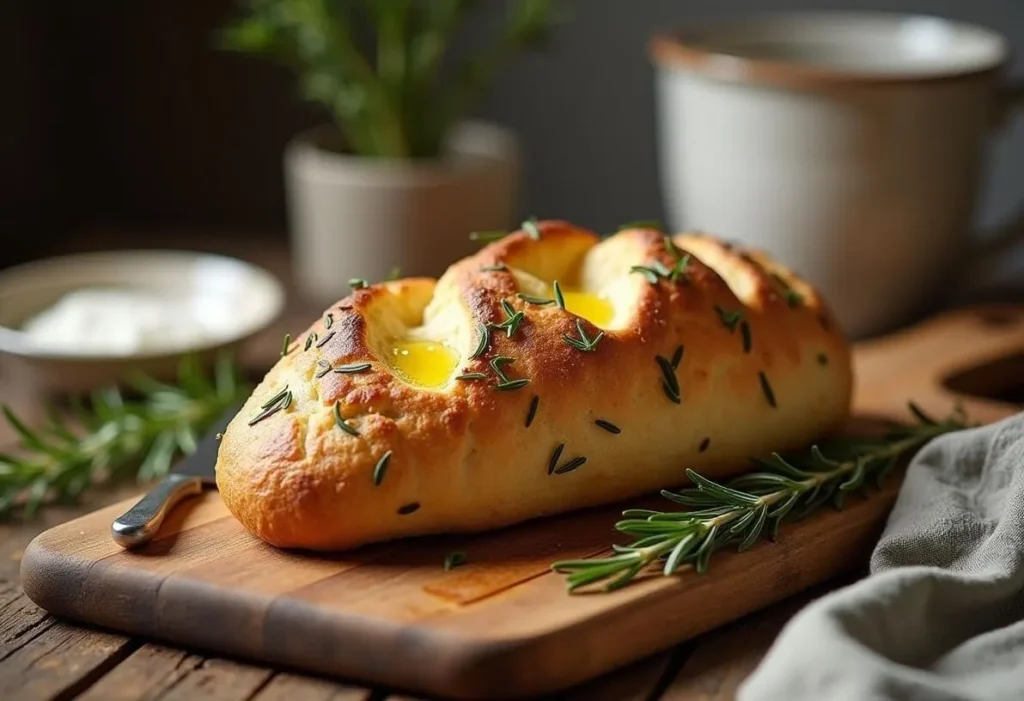
Actionable Tip: To prepare Italian bread for pizza toppings:
- Slice the bread horizontally if necessary, creating a flat surface.
- Brush the surface with olive oil to enhance flavor and prevent sogginess.
- Pre-toast the bread for 5–7 minutes at 375°F to create a stable base for toppings.
- Add toppings and bake at 425°F until the cheese is melted and bubbly.
2.2 French Bread Pizza
French bread pizza has become a popular choice for its simplicity and speed. It’s a go-to option for busy weeknights or casual gatherings, offering a crisp exterior and a soft interior. The elongated shape of a French baguette is perfect for individual servings, and its firm structure makes it ideal for heavier toppings.
Simple French Bread Pizza Recipe:
- Ingredients: 1 loaf of French bread, 1 cup marinara sauce, 2 cups shredded mozzarella cheese, toppings of your choice (pepperoni, bell peppers, mushrooms).
- Instructions:
- Preheat the oven to 400°F.
- Slice the French bread lengthwise to create two flat halves.
- Spread marinara sauce evenly across each half.
- Sprinkle with cheese and add desired toppings.
- Place on a baking sheet and bake for 10–12 minutes until the cheese is melted and golden.
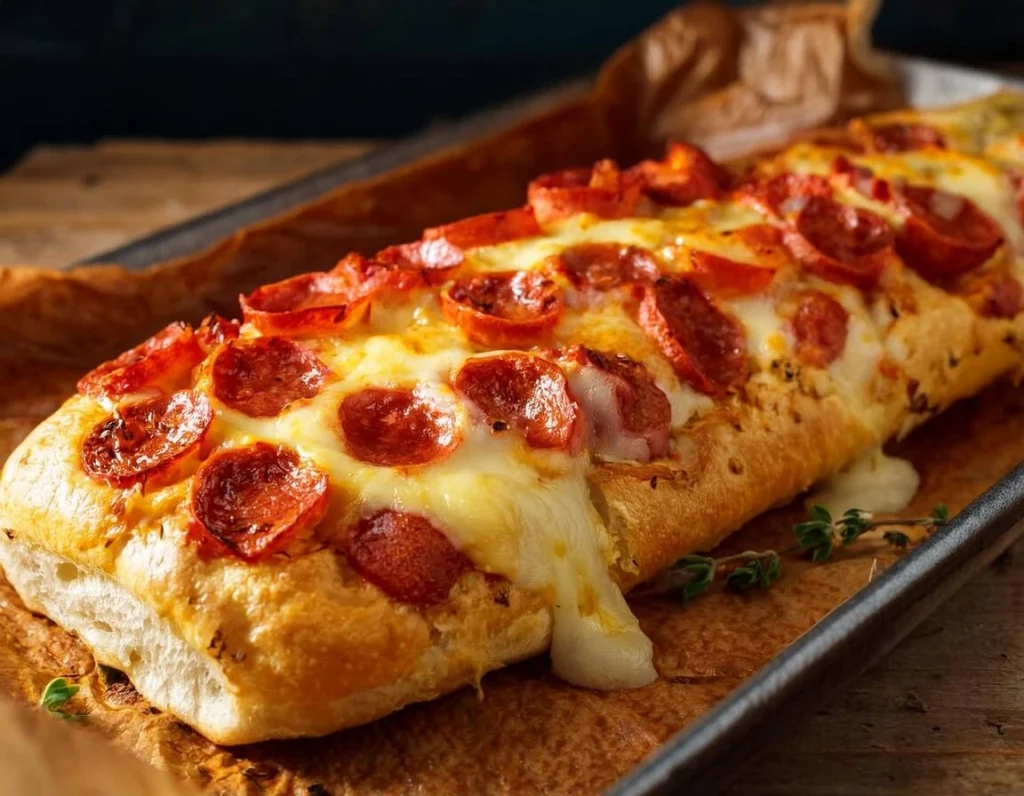
2.3 Best Frozen French Bread Pizza
For those seeking convenience, frozen French bread pizza is a fantastic option. Brands like Stouffer’s and Red Baron offer reliable, high-quality frozen pizzas that deliver great flavor and texture. These products are ideal for a quick snack or meal with minimal effort.
Tips to Enhance Frozen French Bread Pizza:
- Preheat your oven to 375°F and bake directly on a rack for a crispier crust.
- Add extra toppings like fresh vegetables, pepperoni, or additional cheese before baking for a personal touch.
- Sprinkle with herbs like oregano or basil after baking to boost the flavor.
3. Which Bread is Best for Pizza Toppings?
3.1 Matching Toppings to Bread Types
Which bread is best for pizza toppings? The answer depends on the type of pizza you want to create. Each bread brings its own texture and flavor profile, making it suitable for specific toppings and styles.
- Traditional Dough: Ideal for classic pizzas like margherita or pepperoni. Its thin, elastic crust balances the toppings without overpowering them. Traditional dough works best with simple, fresh ingredients like tomatoes, basil, and mozzarella.
- French Bread: Perfect for hearty, cheesy toppings. The firm crust of French bread supports heavier toppings like sausage, mushrooms, and extra cheese. It’s also an excellent option for layered pizzas with multiple ingredients.
- Italian Bread (Ciabatta or Focaccia): Great for gourmet toppings. The airy texture of ciabatta pairs well with roasted vegetables and cured meats, while focaccia’s rich, oily base complements fresh herbs, olives, and ricotta.
By aligning your toppings with the bread type, you can enhance the flavor and create a harmonious pizza experience.
3.2 Bread Texture and Topping Compatibility
The texture and thickness of the bread have a significant impact on how well it holds toppings. Thicker breads like focaccia and French bread can support a generous amount of ingredients without becoming soggy. Thinner options like traditional pizza dough are better suited for lighter, simpler toppings to maintain balance and crispiness.
Actionable Tip: For a crispier base, lightly toast your bread before adding toppings.
- Preheat the oven to 375°F.
- Place the bread on a baking sheet and toast for 5–7 minutes.
- Add your desired toppings and return to the oven for final baking.
This simple step prevents the bread from absorbing too much moisture from the sauce and toppings, ensuring a perfect texture.
4. Baking Techniques and Tools
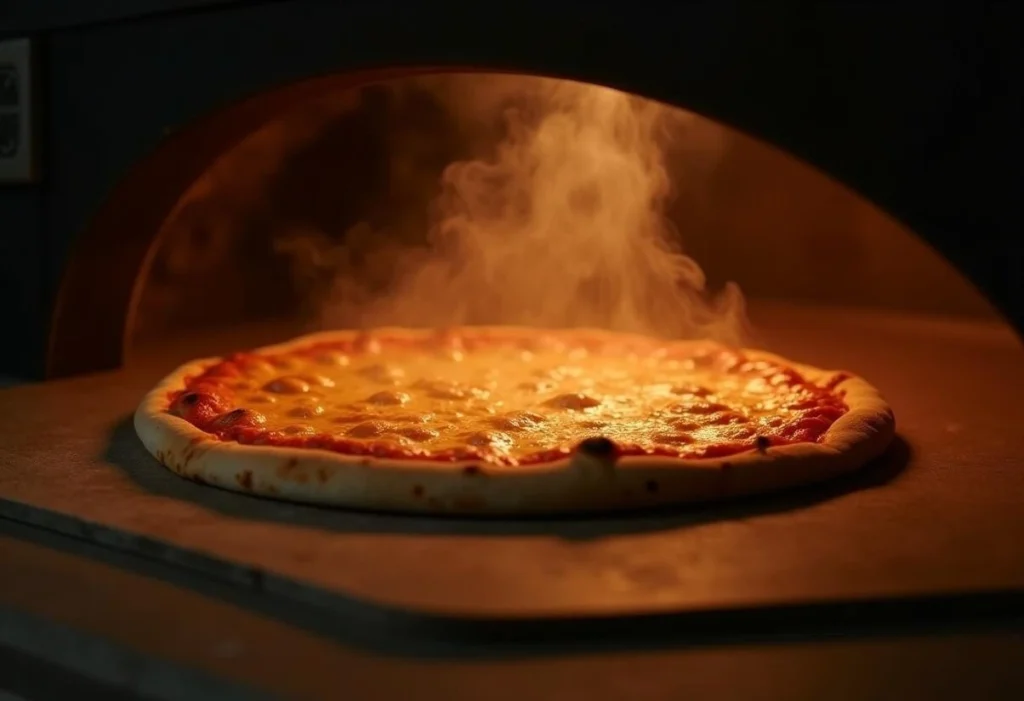
4.1 What is Best to Bake Pizza On?
What is best to bake pizza on? The choice of baking surface plays a crucial role in achieving the perfect pizza crust. For bread-based pizzas, tools like pizza stones, steel plates, and baking sheets are common options, each offering unique advantages:
- Pizza Stone: Ideal for mimicking the high heat of traditional pizza ovens. The stone absorbs and evenly distributes heat, creating a crispy crust.
- Steel Plate: Delivers an even higher heat transfer than a stone, making it perfect for pizzas that need a rapid bake, like traditional dough or ciabatta-based pizzas.
- Baking Sheet: A versatile and readily available option for French bread pizzas. It provides a stable surface but doesn’t retain as much heat as a stone or steel.
Actionable Tips for a Crispy Crust:
- Preheat your oven with the pizza stone or steel inside for at least 30 minutes at 450–500°F.
- Place the pizza directly on the preheated surface for optimal heat transfer.
- If using a baking sheet, brush it with olive oil to enhance the crispiness.
For advice on choosing the right pizza stone to achieve a perfectly crispy crust, refer to this review by Serious Eats.
4.2 Temperature and Timing
Proper temperature and timing are critical to baking bread-based pizzas to perfection. Overcooking can dry out the bread, while undercooking leaves it soggy. Below is a guide for common bread types:
| Bread Type | Temperature | Baking Time |
|---|---|---|
| Traditional Dough | 475°F | 10–12 minutes |
| French Bread | 400°F | 10–12 minutes |
| Ciabatta | 425°F | 8–10 minutes |
| Focaccia | 375°F | 15–18 minutes |
Pro Tip: If the bread is pre-toasted, reduce the baking time slightly to avoid over-browning.
By pairing the right tools and techniques with proper timing, you’ll consistently achieve delicious, crispy pizzas regardless of the bread type.
5. Flour Matters: AP vs. Bread Flour
5.1 Is Bread Better Than AP Flour for Pizza Dough?
Is bread flour better than AP flour for pizza dough? The answer depends on the desired texture and structure of your pizza crust. Bread flour has a higher protein content (10–13%) compared to all-purpose (AP) flour (8–11%), which directly impacts the dough’s elasticity and chewiness.
Bread flour produces a stronger gluten network, resulting in a dough that stretches easily without tearing. This is ideal for traditional pizza dough, where a chewy texture and strong structure are preferred. On the other hand, AP flour creates a softer, more tender crust, making it a suitable option for lighter pizzas or when bread flour isn’t available.
Actionable Tips for Substitution:
- If using AP flour in place of bread flour, add a bit less water to the dough since AP flour absorbs less moisture.
- To mimic bread flour with AP flour, mix 1 teaspoon of vital wheat gluten per cup of AP flour. This increases the protein content.
- For bread flour in softer doughs like focaccia, reduce kneading time to avoid overdeveloping the gluten.
To learn more about the protein content in different types of flours, visit this comprehensive resource.
5.2 How Flour Type Affects Bread Pizzas
The choice of flour impacts the texture and performance of bread-based pizzas like French bread or focaccia:
- Bread Flour: Enhances chewiness and adds strength, ideal for robust French bread pizza with heavier toppings.
- AP Flour: Produces a softer, more delicate crust, suitable for Italian breads like focaccia or ciabatta.
Bread pizzas made with AP flour may have a more tender crumb, while bread flour delivers a firmer, crispier texture.
By selecting the right flour, you can fine-tune your bread pizza to match your desired crust style, ensuring it pairs perfectly with your toppings and preparation method.
6. FAQ Section
What kind of bread is best for pizza?
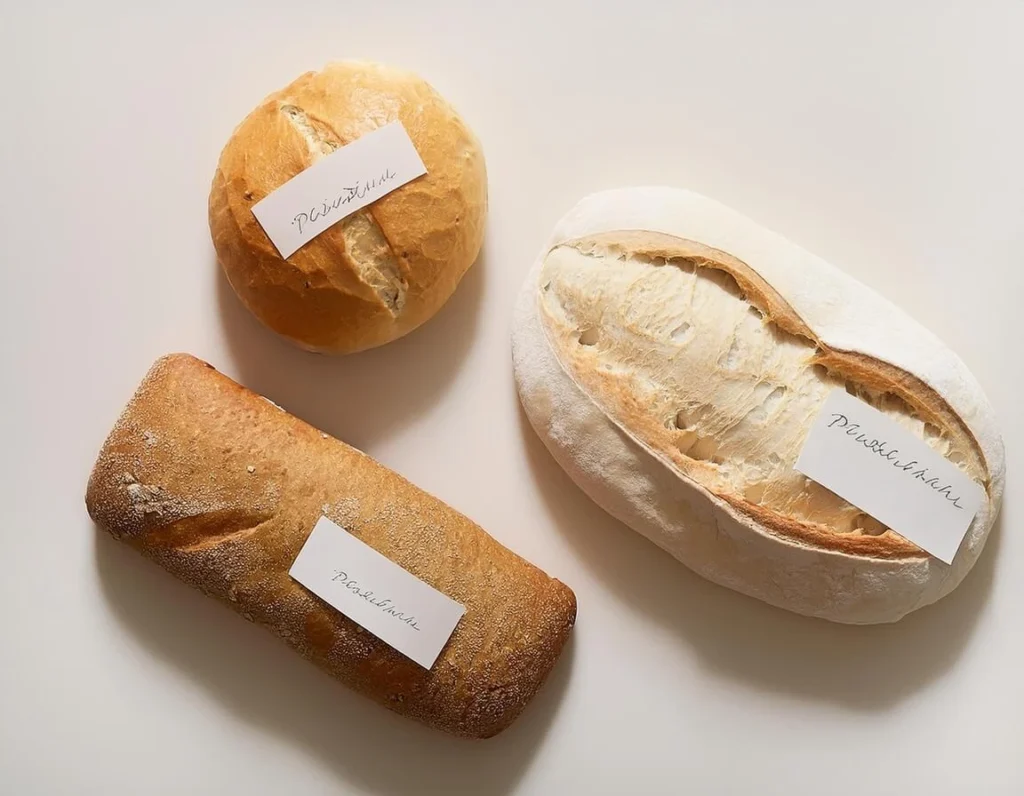
The best bread for pizza depends on your preference and the type of pizza you want to create. Traditional pizza dough is the classic choice for its elasticity and chewy texture, perfect for most toppings. French bread is ideal for quick and hearty pizzas with heavy toppings, while Italian breads like focaccia or ciabatta offer a gourmet base for lighter, fresh ingredients.
What type of bread is pizza dough?
Pizza dough is a specific type of bread dough made with yeast, water, flour, and salt. Its preparation focuses on elasticity and stretchability, distinguishing it from other breads. The dough is designed to be rolled thin or stretched, creating a base that crisps up during baking while remaining soft inside.
Is bread better than AP flour for pizza dough?
Bread flour is generally better for pizza dough due to its higher protein content, which creates a stronger gluten structure. This results in a chewier, more elastic crust. However, AP flour can also be used and produces a softer, more tender crust. The choice depends on the desired texture of your pizza.
7. Conclusion: The Best Bread for Pizza
So, which bread is best for pizza? The answer lies in your personal preferences, the toppings you choose, and how much time you have. Traditional pizza dough is the ideal foundation for classic pizzas, offering a chewy texture and the flexibility to hold a variety of toppings. French bread provides a quick and convenient option with its crisp crust and sturdy structure, perfect for heavier, cheesy toppings. Italian breads like ciabatta and focaccia bring gourmet flavors and a unique texture that pairs beautifully with fresh and lighter ingredients.
Your choice of bread can transform your pizza experience, whether you’re crafting a traditional margherita, a hearty French bread pizza, or a sophisticated focaccia creation. Each type of bread has its strengths, and there’s no single “best” option—only the one that suits your needs at the moment.
We encourage you to experiment with different breads and techniques to discover your favorite. Whether you’re using frozen French bread, pre-made dough, or baking from scratch, there’s a perfect pizza waiting for you to create. With the tips and insights from this guide, you’re well-equipped to explore all the delicious possibilities. Happy baking!
